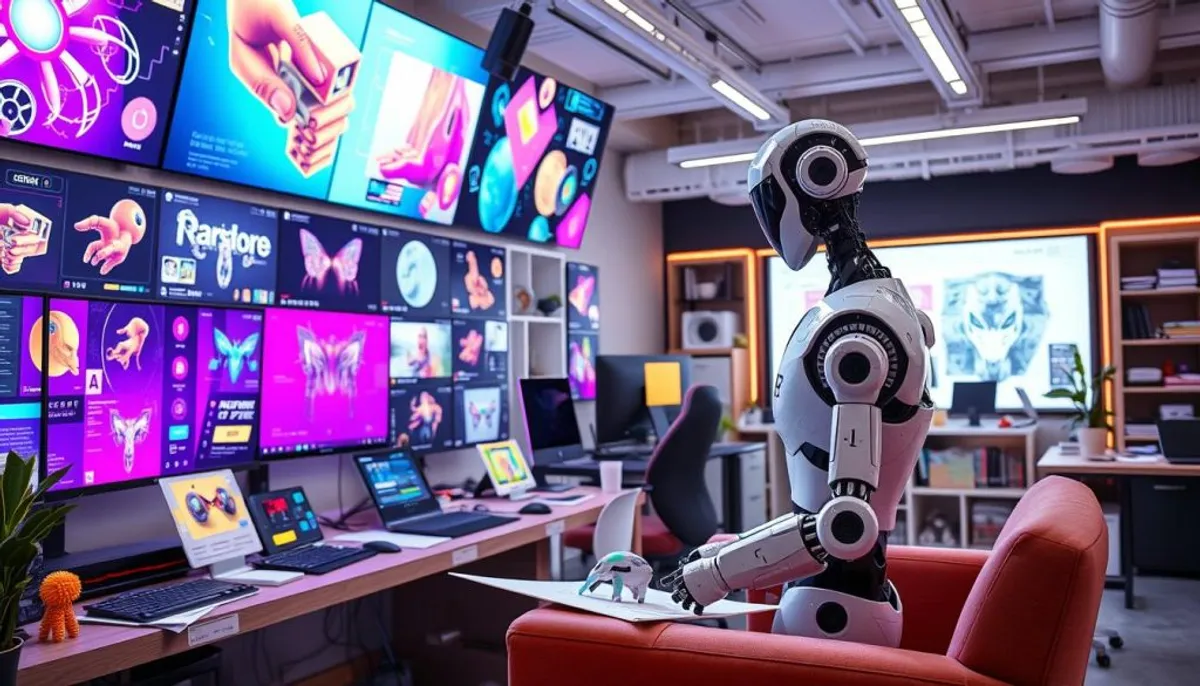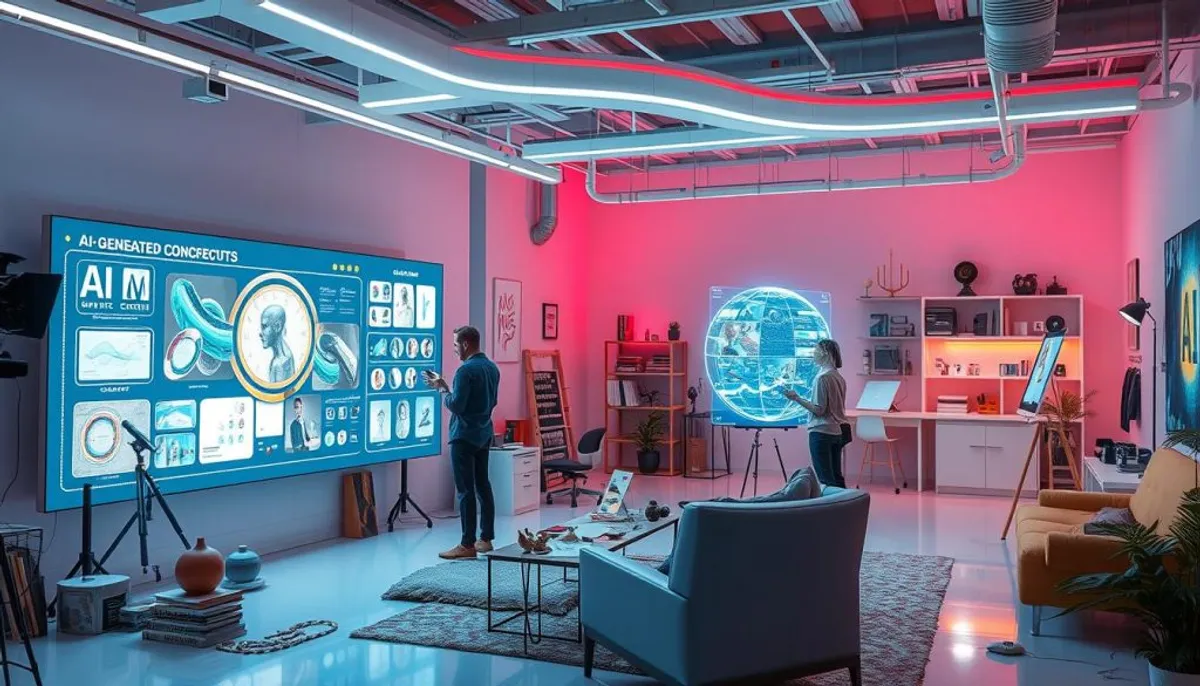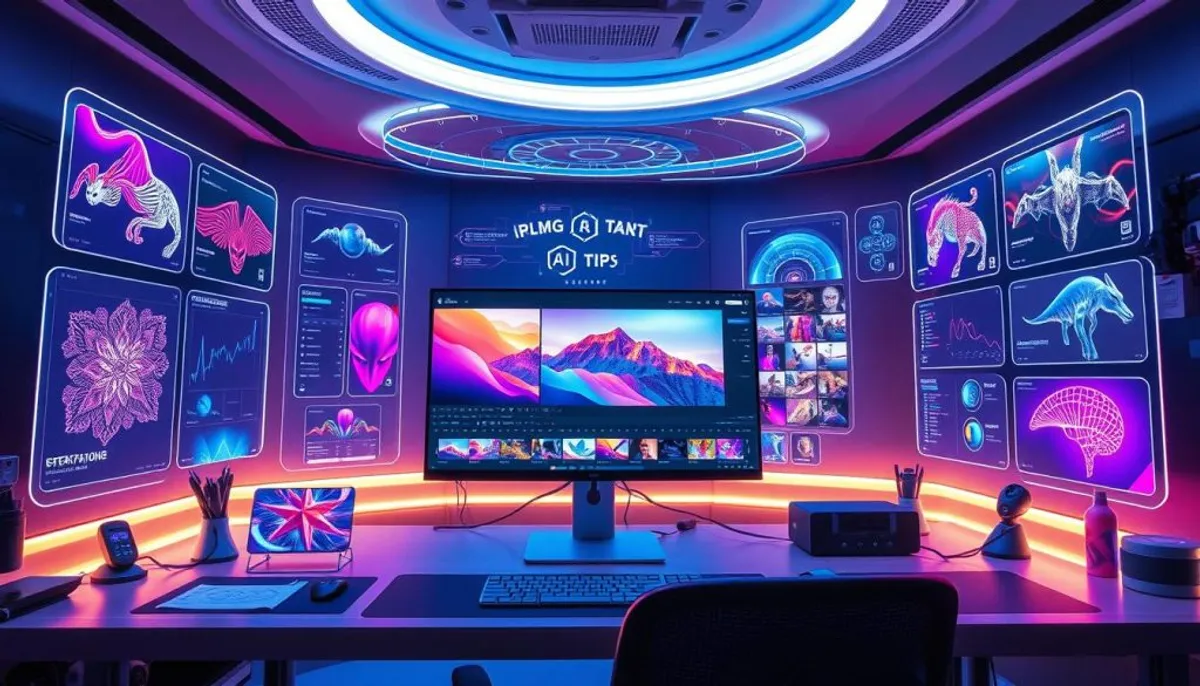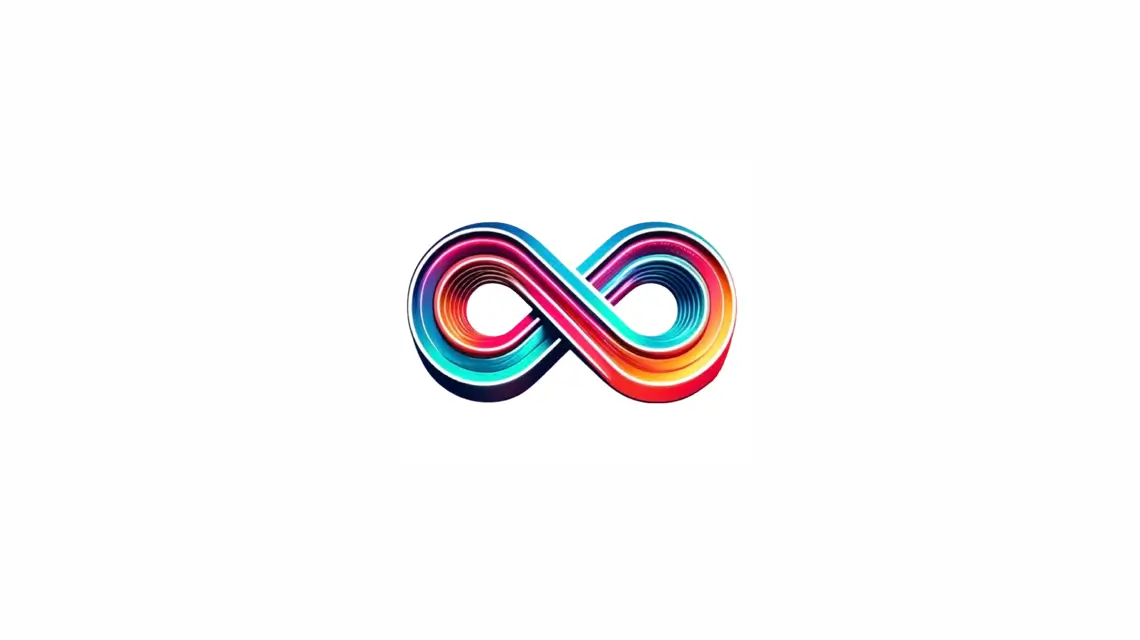The design world is changing fast, thanks to artificial intelligence (AI). Now, designers have new tools that make their work better and easier. This article looks at how AI is changing design. It shows how AI helps designers be more creative and work more efficiently.

Key Takeaways
- AI-powered design tools are automating repetitive tasks, freeing up designers to focus on strategic and creative work.
- AI-assisted creativity is enabling designers to generate fresh ideas, overcome creative blocks, and explore innovative concepts.
- Predictive analytics and personalized design recommendations are enhancing the decision-making process and delivering better design outcomes.
- Collaborative design with AI is streamlining communication and project management, fostering more efficient and effective teamwork.
- Embracing AI in the design process can lead to significant gains in efficiency, productivity, and the overall quality of design deliverables.
Unleashing the Power of AI for Design Workflows
The advent of ai-powered design workflows has changed how designers work. It automates tasks and boosts creativity. Now, AI is key for designers.
Automating Design Processes
Tools like Adobe Sensei have made graphic design faster. They can make layout suggestions and do tasks like removing backgrounds and correcting colors. This saves designers a lot of time and effort.
Enhancing Creativity with AI
Designers can now go beyond their own ideas with AI tools for designers. Tools like DesignScape from IBM offer new ideas and help with design briefs. This makes designers more creative and opens new possibilities.
AI lets designers focus on being creative. Automated ai-powered design workflows handle the rest. This makes designers more efficient and creative, leading to great results for clients and projects.
Streamlining Design Tasks with AI Tools
The design world is changing fast, thanks to AI. AI tools are making design work easier and changing how designers do their jobs. They’re big in personalized design recommendations and predictive analytics in design.
Personalized Design Recommendations
AI gives designers custom tips that fit their needs and likes. These personalized design recommendations look at what users like and what’s trending. They suggest colors, fonts, and layouts that will likely appeal to the audience.
Predictive Analytics in Design
AI also helps with predictive analytics. It looks at lots of data to spot design trends and what users prefer. With these insights, designers can make designs that grab attention and work well.
| AI Design Tool | Key Benefit |
|---|---|
| Canva Recommendations | Personalized design suggestions based on user preferences and industry trends |
| Adobe Sensei Analytics | Predictive analytics to identify popular design elements and emerging visual styles |
| Figma Plugins | AI-powered tools to automate design tasks and improve workflow efficiency |
Using AI design tools for efficiency, designers can make their work easier, be more creative, and give clients what they want. These tools help make designs more personal and effective.
Integrating AI into Creative Processes
Embracing AI integration in design workflows can change the game for creative pros. By smartly adopting ai in design, designers can open up new doors to innovation and efficiency. This takes their work to new heights.
It’s key to see this integration as a chance to grow, not a threat. AI and creative processes can work together well. Designers should view AI as a tool that boosts their skills and encourages them to think bigger and more creatively.
To make AI work in creative workflows, creating a safe and fun space is crucial. Encouraging a culture of trying new things helps designers get past their fears of new tools. This way, they can fully use what AI has to offer.

With careful planning, designers can use AI to speed up their work, avoid missing out on key strategies, and come up with fresh ideas. This mix of human creativity and AI can lead to groundbreaking innovation. It changes the design world for the better.
ai for designers: A Game-Changer for Creativity
AI has changed the game for designers, offering new ways to boost creativity and beat creative blocks. With AI, designers can find fresh ideas, new visual styles, and unique solutions to design problems.
AI-Powered Ideation and Inspiration
Tools like ChatGPT and Bard are now key for designers. They challenge old ideas and spark new ones. Designers can use these AI tools to explore many ideas and get inspired, helping them do their best work.
Overcoming Creative Blocks
AI and creative problem-solving help designers get past stuck thinking. When they’re stuck, AI tools can offer new ideas, show different views, and find innovative solutions. This mix of AI and design creativity changes how designers work, letting them reach new creative heights.
Using AI-powered ideation and AI tools for design inspiration has changed design. Designers can now explore new creative areas and do things they never thought possible. As AI and design creativity grows, designers are ready to use these technologies to make amazing and inspiring work.
Collaborative Design with AI
AI-powered tools are changing how design teams work together. They blend well with project management tools and design software. This makes the design process smoother, keeping everyone in sync.
Streamlining Collaboration and Communication
AI tools make teamwork and talking easier. They have many features that help with this. These include:
- File management and version control – AI takes care of tracking file changes, so designers can focus on being creative.
- Feedback collection and organization – AI tools collect and organize feedback from others, making it simpler to handle comments and ideas.
- Project status updates and task management – AI gives real-time updates on design projects, helping teams stay on the same page.
Using ai and design team workflows makes design work more efficient and team-friendly. AI-powered design collaboration tools let teams focus on creativity. AI does the behind-the-scenes work, making ai and design communication and ai and project management smooth.
AI-Assisted Image Editing and Generation
In the world of design, AI-powered image editing and generation are changing the game. Tools like Let’s Enhance are making it easier for designers to improve their images. They help designers make their visuals look better with ease.
These tools use artificial intelligence to fix images. They can remove noise, make blurry parts clear, and make low-resolution images look better. This helps designers make their product photography and graphic design stand out more.
AI doesn’t stop there. Generative AI models, like DALL-E, are opening new doors for AI-generated images. Designers can now quickly make custom visuals and graphics from text. This brings a new level of creativity and speed to their work in visual design.
As AI gets better, designers are using it more in their work. They’re finding it helps them work faster, be more creative, and deliver amazing ai and visual design solutions.

Efficiency Gains with AI Design Tools
Using AI-powered design tools can change the game for designers. It brings big efficiency gains and saves time. These smart tools automate repetitive tasks. This lets designers focus more on the creative parts of their work.
Time-saving Automation
AI design tools are great at automating many tasks. They handle everything from layout and image editing to picking fonts and colors. Tools like Debuild and Uizard can make web applications quickly. Fronty turns design files into HTML and CSS code fast, speeding up the design-to-development process.
These AI design tools for efficiency and time-saving automation boost ai and design productivity. They make it easy to add ai-powered design workflows to daily tasks. This streamlines design tasks and opens up new creativity.
Artificial intelligence helps designers streamline their work. It frees up time for more strategic and innovative tasks. This leads to better, more efficient results for clients and projects.
Embracing the Future of Design
Designers are stepping into a new era with AI tools. These tools bring many benefits but must be used wisely. It’s key to follow ethical design rules. Designers need to watch out for biases and misuse of AI. They should focus on keeping user privacy, being clear, and being accountable.
Ethical Considerations in AI Design
Designers can use future of design with ai to boost creativity and workflow. They must be careful with ethical ai in design. Following ai design best practices is important. This means using AI responsibly and thinking about ai and design ethics.
- Identify and fix AI biases that could cause harm or discrimination.
- Make sure AI tools are clear about how they work, so users know what’s happening.
- Put in place measures to keep user data safe and private.
- Work with ethicists and lawmakers to set rules for using AI in design responsibly.
By following these guidelines, designers can use AI tools wisely. This way, they keep their craft’s integrity and protect their clients and users.
Conclusion
AI has changed how designers work, making them more creative and efficient. It automates boring tasks and gives personalized advice. This has changed design, letting designers focus more on strategy and creativity.
Designers need to think about the ethics of using AI. This ensures these tools are used right and help the design industry. By using AI, designers can be more innovative and creative, changing the future of design.
AI has made a big difference in design, making it faster and more creative. As design changes, using AI tools will help designers keep up. This will let them give their clients the best results they need.
RelatedRelated articles

